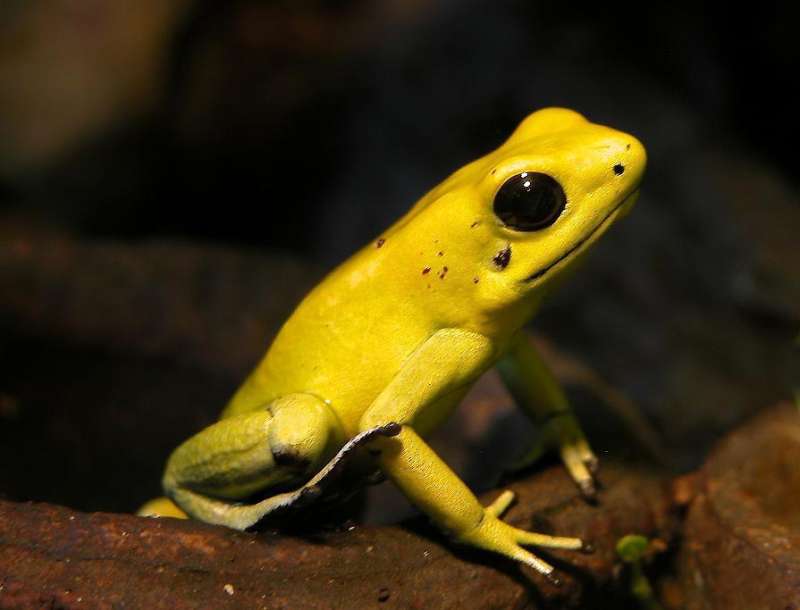November 18, 2016 report
Poison dart frog neurotoxin synthesized

(Phys.org)—A small team of researchers from Stanford University has synthesized the neurotoxin present in the skin of the poison dart frog. In their paper published in the journal Science, the team describes how they accomplished this feat, the steps involved and what they found when they also synthesized a mirror image of it.
The poison dart frog has been known to scientists (and locals who have used its skin chemicals as a poison applied to the tips of blow-darts, which led to the name of the frog) for many years and several researchers have attempted to synthesize the batrachotoxin molecule in the toxin responsible for causing heart attacks in its victims. Until now, all have failed, and the task has been complicated in recent years due to the diminishing numbers of the frogs in their native northern Colombian rain forests. In this new effort, the researchers used data from other studies to understand the makeup of the molecules, then used what they found to create an artificial version. The team says the process involved 24 steps and also led to the synthesis of the toxin's chemical mirror image.
The toxin causes problems for victims by forcing sodium ion channels to remain open. When this occurs in heart muscle, the inflow of sodium causes constriction. But because the channels are stuck open, it cannot be released., and the result is cardiac arrest. The toxin also causes problems in other body parts such as the nervous system. Interestingly, after testing, the researchers found that the mirror image molecule was also deadly, but for the opposite reason—it forced sodium ion channels to remain closed, preventing the outflow of sodium necessary for relaxation.
The newly synthesized molecule has a variety of possible applications. Because the effort also resulted in a chiral twin, the work is expected to help researchers better understand the way ion channels function in general. And now that the molecule can be synthesized in a lab, it will be readily available to anyone wishing to study how it works—perhaps even those wishing to create a bio-weapon. And finally, it could play a role in medical science due to its unique impact on sodium ion channels—by serving as a prototype for creating local anesthetics.
More information: M. M. Logan et al. Asymmetric synthesis of batrachotoxin: Enantiomeric toxins show functional divergence against NaV, Science (2016). DOI: 10.1126/science.aag2981
Abstract
The steroidal neurotoxin (−)-batrachotoxin functions as a potent agonist of voltage-gated sodium ion channels (NaVs). Here we report concise asymmetric syntheses of the natural (−) and non-natural (+) antipodes of batrachotoxin, as well both enantiomers of a C-20 benzoate–modified derivative. Electrophysiological characterization of these molecules against NaV subtypes establishes the non-natural toxin enantiomer as a reversible antagonist of channel function, markedly different in activity from (−)-batrachotoxin. Protein mutagenesis experiments implicate a shared binding side for the enantiomers in the inner pore cavity of NaV. These findings motivate and enable subsequent studies aimed at revealing how small molecules that target the channel inner pore modulate NaV dynamics.
Journal information: Science
© 2016 Phys.org



















